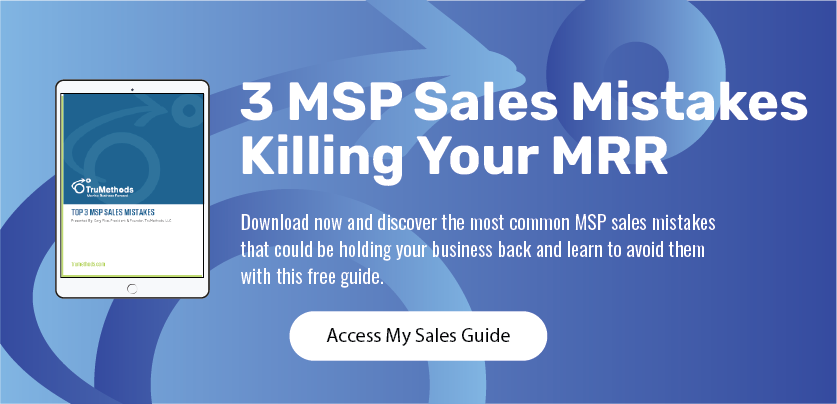When it comes to MSP sales, who doesn’t like a little FUD?
Many sales methodologies were founded in FUD (fear, uncertainty and doubt). Certainly, selling IT services today offers a big opportunity for MSPs and their vendors to create fear, uncertainty and doubt.
Now more than ever, MSPs rely on using cybersecurity as the “F” in FUD. Channel vendors that sell security tools and services want MSPs to use their solutions, and, in some cases, scare prospects into buying those products by running scans and audits that produce thick reports highlighting technical risk in IT environments. But this tactic can oftentimes go beyond FUD to fearmongering.
Now, if you’re using this approach, and it’s working for you, stay with it. But let me be clear on this: When I say working, I mean you’re actually having the result of new customers buying at the right price. More often what I see is customers and prospects pushing back on the relevance of the details or getting overwhelmed and becoming paralyzed.
I’m not saying that audits, scans and reviews are bad. I mean, I personally have invested a few dollars in the building of a little-known MSP tool called myITprocess, which is based entirely on the process of technical review. So, believe me, I’m a fan.
All I’m suggesting is that all business leaders need you to do is simply distill down technical assessments into usable data. What are the gaps? What risks do these vulnerabilities create? What’s a reasonable plan to reduce risk to some reasonable level?
Decision-makers can’t get there from a 10-page technical report. In fact, if they can understand a technical report, it’s more than likely you’re dealing with the wrong person.
So, think of it like this: Technical alignment or compliance data audits is only one piece of the process. The threat landscape is the second piece and understanding your customer’s business is the third.
Explain the changing security or threat landscape to your customer. Use stories and examples. Explain how hackers are maturing their business models and processes, then relate any gaps in a prospect’s environment or enhancements in your approach to their business. Finally, use the investment — whether it’s a one-time or monthly payment — to close the gap and remove that risk.
Too often MSPs run into a situation where a customer is taken aback by a risk assessment. “I thought you were taking care of everything!” is a common response. When this occurs, simply explain that you were, but over time, the threat landscape changes, and when it does, updates are necessary.
My point is you can have meaningful business conversations, build closer relationships with decision makers and move customers to action without using scare tactics. You can still be firm in your recommendations as a way of stressing the critical nature of the situation.
A little FUD is good, but too much can backfire, so always keep that in mind!


